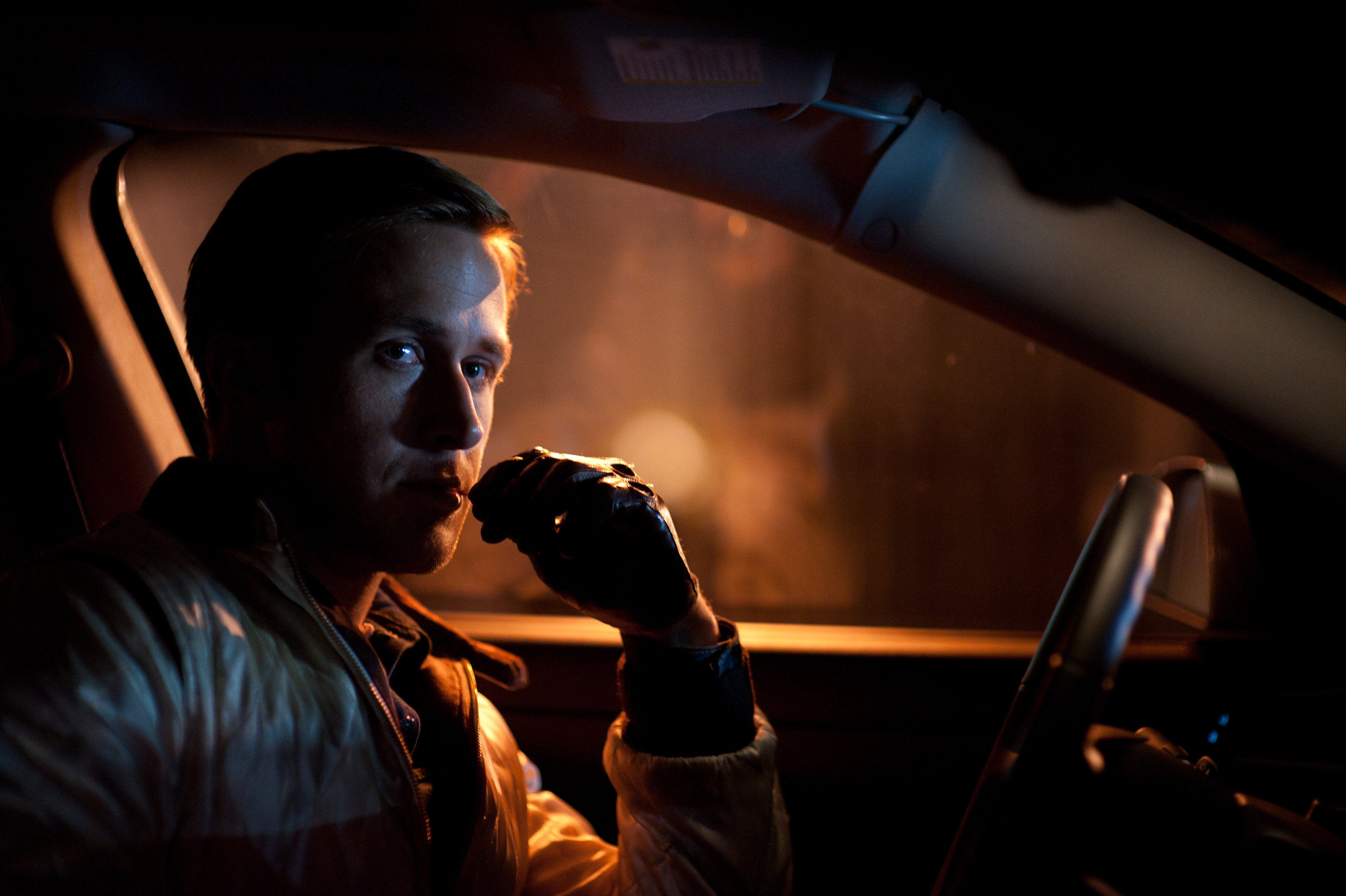Review: Drive (2011)
After all the hype coming out of Cannes, where Danish director Nicholas Winding Refn was awarded Best Director, and the mobs of people seeking photos of star Ryan Gosling at TIFF, I was still very excited to see Drive (2011) finally this week. It’s not surprising that the critical reactions to Drive have been generally positive to ecstatic, while audience reception is highly mixed (it's Cinemascore audience rating is a lowly C-). It’s not the typical kind of film that wins awards at Cannes. For one, it’s a genre film. (The real question will be to decide what genre!) For another, it’s not the kind of film that fans of mainstream Hollywood generally appreciate. Its startling violence punctuating long periods filled with slower, quieter scenes seems to have audiences confused. It has art cinema elements, but utilizes them in a self-conscious way that is likely to generate laughs. Basically, Drive is a very unusual film, but at the same time I found it engrossing and comfortable. And I’m definitely looking forward to seeing it again.
It’s best not to know too much about a film like this, so if you’re already sold on seeing it, perhaps it’s best to stop reading this review now and check back later. The fun of talking about Drive is partly in teasing out the genres that are a play and why their interplay is so effective in this film. The film involves the story of…well, let’s call him Driver as the credits do, since he isn’t given any other name. Played by Ryan Gosling in a highly affected performance, Driver is, well a stunt-driver and mechanic who moonlights as a getaway driver for thieves in Los Angeles. Driver’s side-kick, Shannon (played by none other than Walter White himself, Bryan Cranston), gets them mixed up with a mob boss played with surprisingly effective menace by Albert Brooks and his associate, played by Ron Perlman. Did I mention that I love the cast of this film already? Add to it Driver’s neighbour, Irene (Cary Mulligan) and her adorable (and completely natural) son, Benecio, whom the normally guarded and silent Driver develops a strong affection and protective instinct for, and we’ve got all the elements in place. When Irene’s husband, Standard, returns from prison owing protection money, Driver offers to help him out in order to protect Irene and Benecio from reprisals. Suffice to say that the robbery that Driver and Standard hatch (with the help of Christina Hendricks) goes wrong, and we have the real dramatic twist of the film. Nothing surprising here. The beats of the story are classic.
Many have said that Drive is a kind of neo-noir. But I beg to differ. Drive lacks some of the key elements of a noir. The obvious reference points are the 1960s French crime thrillers of Jean-Pierre Melville, particularly Le Samouraï (1967) and Alain Delon’s Jef who parallels Driver’s Spartan lifestyle and taciturn manner. This is where the similarities to the oeuvre of Michael Mann, whose Los Angeles nightscapes cover similar territory, come in, as Mann’s films are about the same kind of crooks facing existential dilemmas. I think that a key reference point here is the Western. Like many Westerns, particularly George Stevens’ Shane (1953), Drive is concerned to some extent with the interaction of violence and the domestic. Driver is a classic Western hero who is forced to embrace the violence he is trying to escape in order to protect the people he has come to love. One could even imagine Cranston’s Shannon as a variation on the characters that Walter Brennan played in films like Rio Bravo. And Albert Brooks transformation into a menacing villain, while not as drastic, is in the same tradition as Henry Fonda’s Frank from Once Upon a Time in the West (1968). However, the film’s willingness to let scenes play out slowly and the striking use of colour and music to evoke mood recall the influence of art cinema. There are moments that are as much Wong Kar-wai or Kieslowski as Frankenheimer or Friedken.
A word also should be said about the film’s soundtrack. Cliff Martinez’ synth layered score works well in establishing the atmosphere of the film, and the 80s Europop inflected electronica by bands like College and Desire are perfect. Director Refn has said that he is obsessed with the 80s, and this film uses the music to help unite all the other disparate elements at work in the film.
Suffice to say, Drive is unique, but at the same time the sum of its influences. Like Quentin Tarantino, Refn manages to keep the references and allusions from devolving into mere homage. The pastiche comes together to form an entertaining and captivating whole. For those who feel that there is not nearly enough “driving” in a film with this title, keep in mind that one definition of “drive” is an innate urge to achieve a goal or state of being. The ability of the characters to achieve their goals is key to genre filmmaking, and worth considering.
9 out of 10
Drive (2011)
Directed by Nicholas Winding Refn; screenplay by Hossein Amini, based on the novel by James Sallis; starring Ryan Gosling, Cary Mulligan, Albert Brooks, Bryan Cranston, Ron Perlman, and Christina Hendricks.
